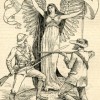
Jo Briggs, “The Second Boer War, 1899-1902: Anti-Imperialism and European Visual Culture”
The Second Boer War, part of the “Scramble for Africa” among European powers, was fought from 1899 and 1902 in what is now South Africa between British Imperial forces and the Transvaal Republic and Orange Free State. The war occurred during the period of so-called New Imperialism (ca. 1880 to 1914) characterized by rising nationalism, racism, Social Darwinism, and genocidal thinking. Occurring roughly in the middle of this period, the Second Boer War became the focal point for a variety of hopes, anxieties, politics, and ideologies. An examination of periodicals created specifically to protest against the war shows that the conflict resonated within diverse local contexts, revealing the complex interplay between global events and local politics.
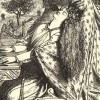
Lorraine Janzen Kooistra, “The Moxon Tennyson as Textual Event: 1857, Wood Engraving, and Visual Culture”
By convention the launch of the so-called “golden age” of wood-engraved illustration in Britain, also known as “the sixties,” is Edward Moxon’s publication, in May 1857, of Alfred Tennyson’s Poems, with 54 wood-engraved illustrations designed by 8 artists, including the Pre-Raphaelites John Everett Millais, William Holman Hunt, and Dante Gabriel Rossetti. Although the Moxon Tennyson was neither a commercial nor critical success on first publication, before the decade was out its Pre-Raphaelite designs were considered a touchstone for artistic illustration, a reputation that continues today. Without disputing the significance of this aesthetic achievement, I want to shift critical focus to the Moxon Tennyson’s status as mass-produced work of art in the age of mechanical reproduction. My interest here is in how its visual communication was expressed through its reproductive technology at the historical moment of its production and reception. This essay re-positions the Moxon Tennyson as a textual event by reading it in the context of documentary, satiric, and artistic wood-engraved images selected from the crucial six-month period after its publication. By situating the Pre-Raphaelite illustrations for Tennyson’s Poems in relation to representations in the public press of such disparate events as the Art Treasures of the United Kingdom Exhibition in Manchester, the reportage on Indian uprisings at Meerut and Cawnpore, the Matrimonial Causes Act, and the Christy Minstrels show in London, I aim to show the complex ways in which the Moxon Tennyson was a worldly event, caught up in, and contributing to, ways of seeing and knowing in 1857.
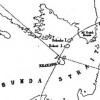
Monique R. Morgan, “The Eruption of Krakatoa (also known as Krakatau) in 1883”
This essay gives a brief overview of the events of 26-27 August 1883, when the volcanic island of Krakatoa in Indonesia exploded; it generated tsunamis which killed over 36,000 people, was heard 3,000 miles away, and produced measurable changes in sea level and air pressure across the world. The essay then discusses the findings of the Royal Society’s Report on Krakatoa, and the reports in the periodical press of lurid sunsets resulting from Krakatoa’s dust moving through the atmosphere. It closes by examining literature inspired by Krakatoa, including a letter by Gerard Manley Hopkins, a poem by Alfred Tennyson, and novels by R. M. Ballantyne and M. P. Shiel.
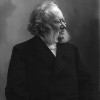
Renata Kobetts Miller, “The Cultural Work of Drama Criticism in the Early 1890s”
J. T. Grein’s founding of the Independent Theatre Society in 1891 marks a turning point in the cultural history of British theater. For the first time, the London stage had a theater that eschewed popular and profitable forms and embraced avant-gardism. While the Independent Theatre provided an alternative to the commercial theater, drama critics began to define their work as a non-commercial assessment of theater. Focusing on 1893, Miller demonstrates that reviewers in the early 1890s either directly used the Independent Theatre to define their own cultural roles or indirectly reflected the Independent Theatre’s concept of writing for an audience that is elevated above mass culture.

Ian Duncan, “On Charles Darwin and the Voyage of the Beagle”
The event now known as “the voyage of the Beagle” comprises Charles Darwin’s circumnavigation as ship’s naturalist on the second of three surveying voyages by H.M.S. Beagle; the writings published as his first book, the Journal of Researches; and the genesis of his theory of evolution by natural selection. Writing between regimes of world-knowledge, Darwin mediates scientific observation through the language of aesthetics, and seeks to understand the convergence of disparate scales of geological and human history.
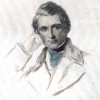
Amy Woodson-Boulton, “The City Art Museum Movement and the Social Role of Art”
British art museums developed along substantially different lines than those in Continental Europe. Rather than create a centrally supported or designed system of cultural provision, the British Parliament passed permissive legislation in the middle of the nineteenth century that allowed localities to choose to establish public libraries and museums. Cities thus founded art museums independently, at the instigation of committed local reformers and benefactors, while most national institutions proceeded by Parliamentary acts rather than through the nationalization of royal collections. A generation later, inspired by the works of John Ruskin and the new aesthetic of Pre-Raphaelitism, many men (and some women) pushed their cities to create art museums not primarily as a means to educate the public about art history, but to counteract the toxic effects of the moral and physical ugliness of industrial capitalism, and of industrial cities in particular. The resulting institutions formed a new kind of domesticated public space, bringing together ideas about the middle-class home as a refuge and about beauty as a means of “improving” the working classes. However, John Ruskin himself often criticized these efforts as too accommodating of industrial society.
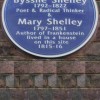
Tom Mole, “Romantic Memorials in the Victorian City: The Inauguration of the ‘Blue Plaque’ Scheme, 1868”
The ‘Blue Plaque’ scheme, which places memorial tablets on houses in London once occupied by distinguished people, was inaugurated in 1868, when the Royal Society of Arts placed the first plaque on the house in Holles Street (off Oxford Street) where Lord Byron was born. This was the first of many plaques: at least 33 were in place by the end of the century, with more planned. The distinctive blue circular design was adopted in 1901 and the scheme continues to operate today under the management of English Heritage. This essay argues that the scheme drew on key Romantic ideas about commemorative practice, expressed by William Godwin, William Wordsworth and Samuel Rogers, as well as memorialising Romantic authors. It suggests that the “Blue Plaques” should be read in the context of a number of pantheonic initiatives undertaken during the period of the Reform agitation, which aimed to promote cultural consensus in the present, by creating consensus about the noteworthy individuals of the past.
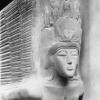
Ellen Crowell, “Oscar Wilde’s Tomb: Silence and the Aesthetics of Queer Memorial”
This entry looks at how, in the aftermath of Oscar Wilde’s death, those individuals closest to the writer sought a suitable funerary monument in memorial. I first explore the interpersonal and aesthetic politics that informed the choice of Jacob Epstein as the tomb’s commissioned sculptor, and how that choice must be understood as integral to how we remember Wilde today. Noting how profoundly the aesthetics of funerary sculpture are in dialogue with both literary and queer history, this essay also briefly imagines how an alternate monument adorning Wilde’s tomb might have differently configured that dialogue. By comparing Epstein’s tomb with the radically different aesthetics that guide a “rejected” design, this one by the writer’s close artistic collaborator and friend Charles Ricketts, this essay considers how aesthetics have shaped twentieth and twenty-first century approaches to queer memory, mourning, and modernity.
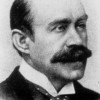
Rachel Teukolsky, “Walter Pater’s Renaissance (1873) and the British Aesthetic Movement”
Walter Pater’s Studies in the History of the Renaissance is known as the “golden book” of the British Aesthetic movement. Though ostensibly focused on Italian Renaissance art, the book speaks obliquely to Pater’s own Victorian moment, challenging conventional codes of religion, morality, sexuality, and scholarship. This essay surveys Pater’s diverse methods of quiet rebellion, including his ironic treatment of critical and scholarly norms. The essay’s second part considers the relation of The Renaissance to the emergence of popular aestheticism in the later 1870s.
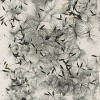
Andrea K. Henderson, “William Henry Fox Talbot: The Photograph as Memorial for Romanticism”
This essay argues that William Henry Fox Talbot’s invention of the negative-positive photographic process was facilitated by the fact that he conceived of his historical moment as one in which the ideals of Romanticism, while still attractive, were becoming increasingly untenable. Talbot found the Romantic conception of the poet as the archetypal artist deeply compelling, but he feared that he and other men of his generation might be unequal to the task of artistic creation as it was theorized and practiced by late-Romantic poets like Shelley and Byron. Talbot addresses this anxiety in a poem of his own, “The Magic Mirror,” in which he explores the possibility that a special device might preserve a poetic account of nature in the form of a visual image. For Talbot, such a technology would of necessity fall short of Romantic ideals, being an externalized manifestation of poetic power—a tool to hand rather than an inspired voice within. At the same time, he understood that it would be possessed of a magic of its own in its capacity to revive a Romantic vision of nature. This conception of the visual image as (inadequate) memorial to a poetic ideal actually empowered Talbot by enabling him to tolerate the tendency of his early experimental photographs to darken or fade, and it prompted him ultimately to produce photographs whose melancholy character constitutes an important part of their extraordinary beauty.
